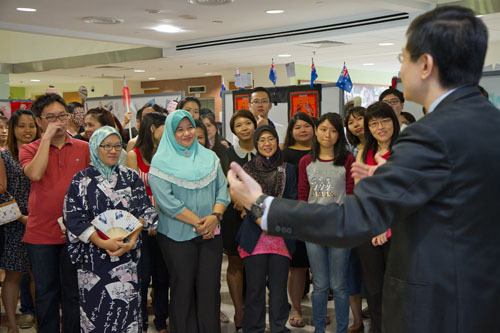
The Program of International Student Assessment (پیسا) ہر تین سال کے لئے دیا ایک امتحان ہے 15 year olds around the world in reading, math and science. In the recent 2012 ٹیسٹ, 65 countries and education systems participated: http://www.oecd.org/pisa/keyfindings/PISA-2012-results-snapshot-Volume-I-ENG.pdf. While the US did not perform well, impressive PISA gains were made in low-performing countries, such as Qatar and Kazakhstan. Some higher performing nations, such as Singapore, پولینڈ, Germany and Italy, also made significant advances. PISA results are often used by governments around the world to justify decisions they wish to take on education policy. But should PISA be allowed to become the conclusive world exam for our kids? آج میں تعلیم کے لئے گلوبل تلاش, I have asked Pak Tee Ng, Tony Wagner and Randi Weingarten to share their perspectives.
ڈاکٹر. پاک Tee کی اوں ایسوسی ایٹ ڈین, قیادت سیکھنا, Office of Graduate Studies and Professional Learning at the National Institute of Education, Nanyang ٹیکنالوجی یونیورسٹی, سنگاپور کے جمہوریہ. ڈاکٹر. Tony Wagner is Expert in Residence at Harvard University’s Innovation Lab. Randi Weingarten is President of the American Federation of Teachers.
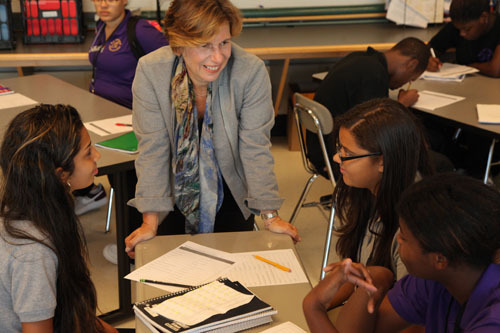
The PISA results provide some useful information about education systems. تاہم, many subjects are not tested by PISA. How much credit should individual countries give to the PISA results as an accurate country by country comparison of student outcomes in Math, سائنس اور ریڈنگ?
ٹونی ویگنر: Unlike other tests such as NAEP or TIMSS, PISA tests students’ ability to apply what they have learned — to use knowledge in new situations, not just recall it. And so I think the broad trends that are revealed in the testing are very important to consider. The fact that after 11 years of No Child Left Behind, the US shows no progress in PISA whatsoever — while many other countries have made great strides — is perhaps the most significant finding for us. It tells us we are using the wrong strategies to improve education.
PAK NG: PISA is one of the few recognized international comparison tools for math, science and reading performance. Because of globalization, educational benchmarking with others provides a country an indication (not absolute measure) of its current and future competitiveness in the global market. تو, PISA findings are useful in their own ways. تاہم, PISA is not everything. It does not paint the entire picture. It does not test social skills or emotional maturity, or measure appreciation of sports and arts. Some have questioned the validity and reliability of the PISA tests, and whether certain jurisdictions ‘cheated’ on them. لیکن, international comparisons in education standards can never be absolutely fair. وہ اپنے بچوں کی تعلیم کو بہتر بنانے کے لئے ایک دوسرے کو اور کیا وہ نتائج کے ساتھ کیا کر رہے ہیں کے ساتھ موازنہ کر رہے ہیں کیوں زیادہ اہم سوالات کے ممالک کو خود سے پوچھنا پڑے ہیں. ممالک ایک مفید ریفرنس کے طور PISA نتائج لینا چاہئے, not as a report card.
Randi کی Weingarten: There is never a perfect measure, particularly given the large variability internationally. کہا جا رہا ہے, PISA has a lot of good information. Countries (امریکی سمیت) should use PISA results along with other information to inform the way we improve our schools. We can’t continue to just look at the horse race and sigh that the United States is still doing poorly and move on until the next PISA report. It is incumbent on all policymakers to work with educators, parents and other stakeholders to actually learn the lessons of the top-performing countries and do what we know will work to make schools more equitable and successful.
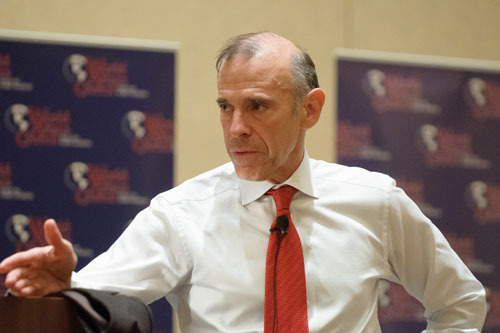
Successful education systems globally are working to create alternative pathways (مثلا. vocational) instead of just academic ones for students to find success. اس پر اپنے خیالات کیا ہیں?
ٹونی ویگنر: Many of the most successful education systems — notably Finland — offer a career/technical pathway for students. In that country, nearly half of all students choose CTE (Career and Technical Education) over an academic curriculum. My research suggests that as many as half of the high school students in the US would also choose a high quality CTE curriculum if it were offered. With the un and under employment rate of recent college graduates now over 50% and the cost of college continuing to climb, a growing number of students are worried that a four year college education may not be the smart investment it once was. One of my biggest concerns about Common Core is that it appears to offer only a one size fits all college prep curriculum for all students.
Randi کی Weingarten: This is crucially important for our country. We must provide our students with fully supported, multiple tracks. The American Federation of Teachers has advocated high-quality CTE opportunities for years and we should look to countries that are successfully incorporating these programs, سنگاپور جیسے, جرمنی, and those in northern Europe.
I visited the CTE institute in Singapore, which was impressive. They have the same emphasis on CTE as they do on traditional academic study. It was a well-funded, highly productive school that prepared students to immediately move into the Singaporean economy and have a successful career in hundreds of exciting areas.
Here in the U.S. we need to look at more collaborative efforts between school districts, businesses and higher education. When done well, high-quality career and technical education provides graduates with employment in good-paying 21st-century jobs, establishes a solid foundation for further education, and makes a vital connection for students between their high school educations and a tangible, desirable future. These programs have been found to lower drop-out rates and give students a defined pathway to a productive life doing meaningful work.
PAK NG: A good education system provides a platform for different talents to flourish and different aspirations to be fulfilled. It helps students, with different needs, inclinations and strengths, find success in their areas of study, be those in arts, sports or technical education. It encourages each student to find identity, meaning, and purpose through their school lives. تو, I support the drive for education systems globally to develop many pathways for students to find success in their different areas.
سنگاپور میں, we take a balanced approach. Students who can do well academically are given opportunities to develop their academic potential. But we also commit vast resources to level up every student and create more pathways for students to find success in their areas of strength. We try to educate our students so that they will contribute to society when they are successful.
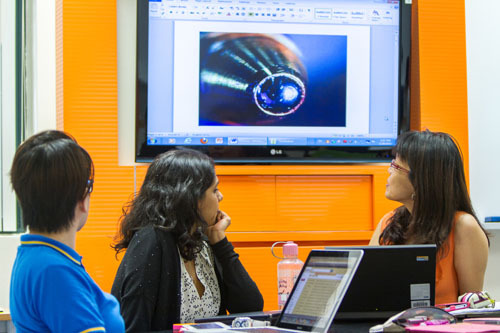
School systems globally can learn from each other’s practices, but given the unique cultural and developmental trajectories of individual countries, how easy or difficult is it to copy practices?
ٹونی ویگنر: Countries cannot necessarily “کاپی” practices of other countries, but we can learn a great deal from trends that we see elsewhere. مثال کے طور پر, other countries like Sweden that have invested heavily in school choice have seen their scores decline sharply. While countries that have made significant investments in radically improving their teacher preparation programs have seen dramatically improved PISA scores.
PAK NG: The strengths of other systems should inspire us to reflect on our own system. But we cannot copy practices. We have to understand the underlying principle behind the success of others and find our own way to success, based on our unique culture and contexts. Finland and Singapore have been used often as examples of educational success. فن لینڈ میں, all their teachers have a master’s degree. I do not think any education system can demand that of their teachers overnight! سنگاپور میں, we have a national system for recruiting new teachers, training in-service teachers and developing school leaders. But one cannot take this idea and simply implement it in a decentralized system. The important lesson is to appreciate the underlying principle of having good teachers and school leaders, and taking their continuous professional development very seriously.
Randi کی Weingarten: Of course culture matters but there are clear lessons that cut across all cultures. سب سے پہلے, teaching matters. We must build a profession of teaching that treats teachers as the educational experts they are. We must give our teachers the time, ، فورم کے اوزار, and support they need to succeed. Schools must assure that teachers have a say in the decisions that affect their classrooms. سب سے اہم بات, teachers need time to collaborate with colleagues, time to prepare their lessons so they are the best teachers they can be. We need to stop the top-down accountability that has silenced innovation and build a more horizontal structure in schools where teachers work together and are accountable to each other instead of to a test score.
Andreas کی Schleicher (Deputy Director for Education and Skills, OECD Special Advisor on Education Policy) has said time and again, “an inequitable school system can never be a high-performing school system.” This concept transcends culture. All the high performing systems take active steps to address equity in schools. This is a lesson the U.S. must learn as soon as possible. PISA study after PISA study has shown the high level of inequity in our schools. U.S. schools mainly rely on property taxes for funding, which means poor areas receive far less funding than wealthy districts. نتیجتا, those who need the most resources don’t get them.

Photos are courtesy of AFT, Pak Tee Ng and Tony Wagner
تعلیم کے لئے عالمی تلاش میں, سر مائیکل باربر سمیت میرے ساتھ اور عالمی سطح پر معروف فکری رہنماؤں (برطانیہ), ڈاکٹر. مائیکل بلاک (امریکہ), ڈاکٹر. لیون Botstein (امریکہ), پروفیسر مٹی Christensen کے (امریکہ), ڈاکٹر. لنڈا ڈارلنگ-ہیمنڈ (امریکہ), ڈاکٹر. مادھو چوہان (بھارت), پروفیسر مائیکل Fullan (کینیڈا), پروفیسر ہاورڈ گارڈنر (امریکہ), پروفیسر اینڈی Hargreaves نے (امریکہ), پروفیسر کریں Yvonne ہلمین (نیدرلینڈ), پروفیسر کرسٹن Helstad (ناروے), جین Hendrickson نے (امریکہ), پروفیسر گلاب Hipkins (نیوزی لینڈ), پروفیسر Cornelia Hoogland (کینیڈا), فاضل جیف جانسن (کینیڈا), مسز. چینٹل کوفمین (بیلجیم), ڈاکٹر. Eija Kauppinen (فن لینڈ), سٹیٹ سیکرٹری Tapio Kosunen (فن لینڈ), پروفیسر ڈومینک Lafontaine (بیلجیم), پروفیسر ہیو Lauder (برطانیہ), پروفیسر بین لیون (کینیڈا), رب کین میکڈونلڈ (برطانیہ), پروفیسر بیری McGaw (آسٹریلیا), شیو ندار (بھارت), پروفیسر R. نٹراجن (بھارت), ڈاکٹر. PAK NG (سنگاپور), ڈاکٹر. ڈینس پوپ (امریکہ), شریدر رازگوپالن (بھارت), ڈاکٹر. ڈیانے Ravitch (امریکہ), رچرڈ ولسن ریلی (امریکہ), سر کین رابنسن (برطانیہ), پروفیسر Pasi Sahlberg (فن لینڈ), پروفیسر Manabu ساتو (جاپان), Andreas کی Schleicher (پیسا, او ای سی ڈی), ڈاکٹر. انتھونی Seldon نے (برطانیہ), ڈاکٹر. ڈیوڈ Shaffer کے (امریکہ), ڈاکٹر. کرسٹن عمیق کر رہے ہیں (ناروے), چانسلر اسٹیفن Spahn (امریکہ), ایوز Theze (اسکول Français کی امریکہ), پروفیسر چارلس Ungerleider (کینیڈا), پروفیسر ٹونی ویگنر (امریکہ), سر ڈیوڈ واٹسن (برطانیہ), پروفیسر Dylan کے Wiliam (برطانیہ), ڈاکٹر. مارک Wormald (برطانیہ), پروفیسر تیو Wubbels (نیدرلینڈ), پروفیسر مائیکل نوجوان (برطانیہ), اور پروفیسر Minxuan جانگ (چین) وہ تمام اقوام کو آج سامنا ہے کہ بڑی تصویر تعلیم سوالات دریافت کے طور پر. تعلیم کمیونٹی پیج کے لئے گلوبل تلاش
C. M. روبن وہ ایک موصول ہوئی ہے جس کے لئے دو بڑے پیمانے پر پڑھا سیریز کے مصنف ہے 2011 میں Upton سنکلیئر ایوارڈ, “تعلیم کے لئے گلوبل تلاش” اور “کس طرح پڑھیں گے?” انہوں نے تین bestselling کتابوں کے مصنف ہیں, سمیت Wonderland میں یلس اصلی.
C پر عمل کریں. M. ٹویٹر پر روبن: www.twitter.com/@cmrubinworld


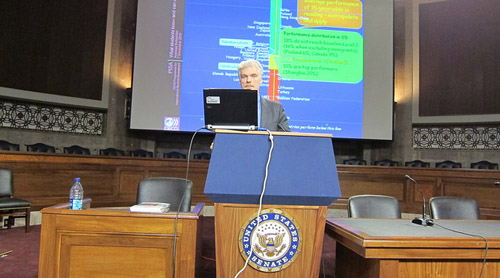
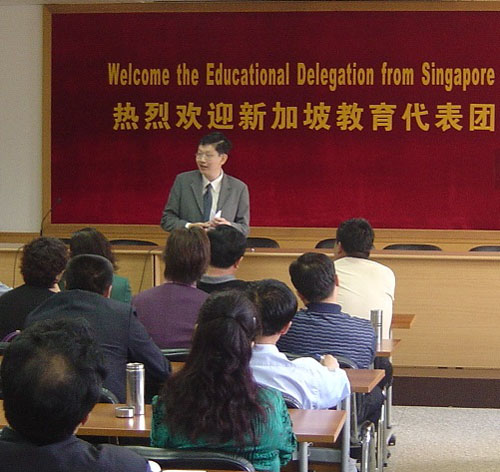
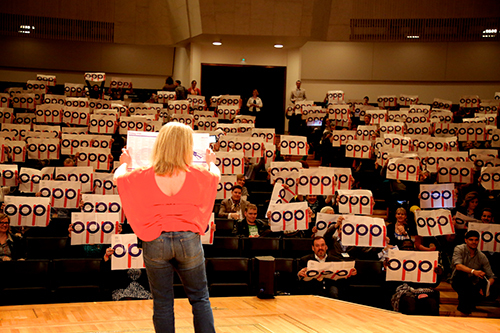
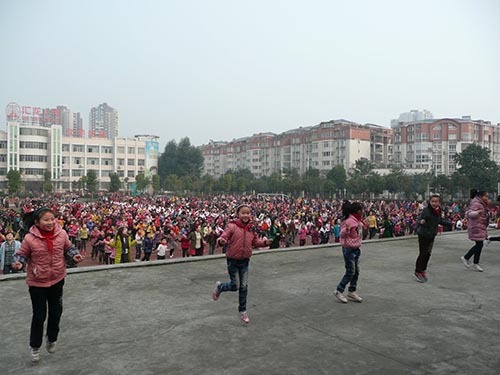
حالیہ تبصرے